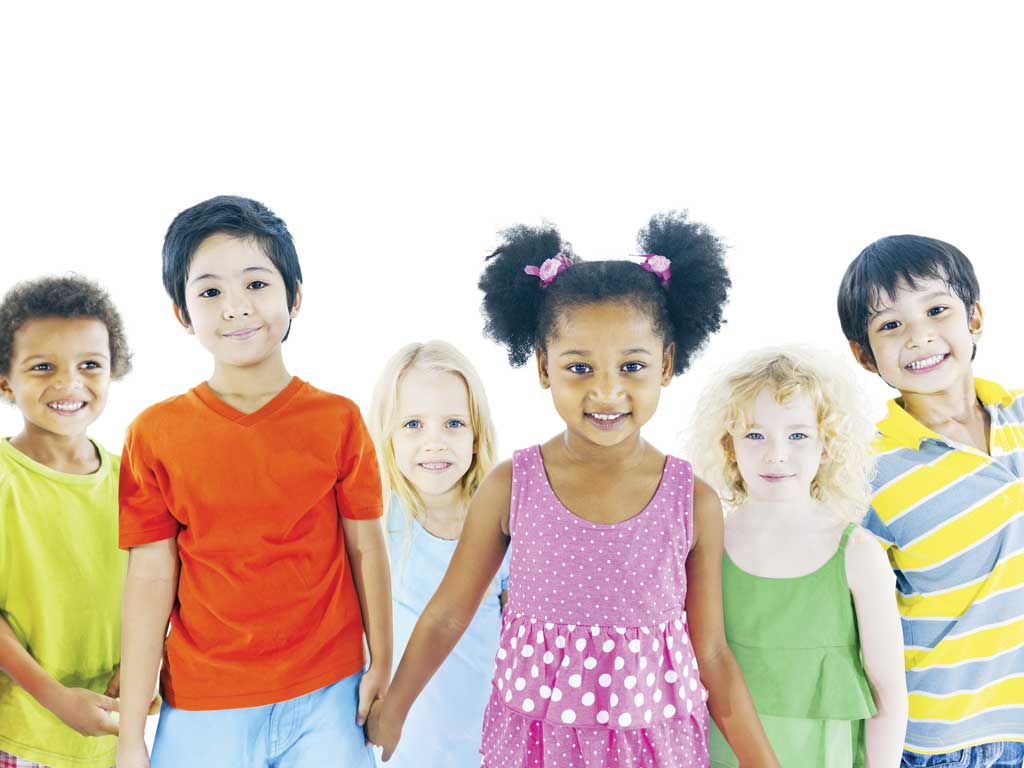by Sara Tiller
By many standards, Hawaii leads the nation in diversity. With more multiracial children and mixed marriages than any other state, the island melting pot is an example of what the mainland might look like in just a few decades.
In our multicultural world, children will naturally encounter people of different races, religions, and cultures. Maintaining a spirit of welcoming and acceptance of differences is not quite as natural, however. These differences can sometimes lead to prejudice, division, and bullying. In this multicultural landscape, programs to teach tolerance are springing up in classrooms around the country.
It’s true: teaching tolerance can reduce school bullying. Those who look or act differently are prime targets for bullying. Teaching respect for differences can help stop potential bullies before they start. They are more comfortable with their own identities, and less likely to put others down.
Tolerance and respect for diversity can also mean better jobs and more economic opportunities. One consultant points out that tolerant adults have an easier time at work. They will also have more career opportunities in a global world.
So it’s easy to see how tolerance is one of the most important tools we can give our children. Figuring out how to teach tolerance is much harder.
Classroom programs to teach tolerance are one great tool, but so far they are in just a few schools. Some of the most critical moments in a child’s development also come before they are in school. What’s more, parents are a child’s first and most consistent teachers. Most parents don’t have the benefit of a lesson plan to help their children learn about tolerance. So what can parents do to teach tolerance?
For better or worse, teaching tolerance is not a single discussion or event. Children learn tolerance from watching their parents: Consider how you interact with strangers, respond to new situations, and describe other people. What are you currently teaching your child about tolerance? How can you become a better role model?
It’s no surprise that role modeling tolerance and respect is one of the best ways to teach children about it. Karen Stephens, a child science instructor writing about bullying, explains that, “children tend to grow up to be a lot like their parents.”
Children constantly observe and copy their parents’ behavior. As babies, they copy games of patty cake and peekaboo. As teenagers and young adults, they might repeat the cycles of abuse they saw at home. Children learn as much from their parents’ actions as they do from their words.
To model tolerance, get comfortable with different cultures and new situations. Introduce your children to new situations and people at the same time. Seek out new cultural perspectives. Take a trip to Chinatown, the Polynesian Cultural Center, or the Byodo-In Temple.
Get out of your comfort zone in less obvious ways, as well. Not into art? Go to Art in the Park at the Children’s Discovery Center anyway. Not athletic? Take your children to the Hawaii Polo Club or a flag football game. Talk with your children about the differences they – and you – see there.
Parents can also use situations that arise naturally to teach children about tolerance. Children are curious, so they often ask questions when they notice differences. Questions about why a classmate “talks funny” present an opportunity to talk about tolerance and respect.
For children, the time between ages five and eight is critical. At this age, children begin to see differences as good or bad. They begin to use them to choose best friends or exclude outsiders. Luckily, children at this age are also flexible enough to change their values. You can help your children respect differences by explaining them in factual, value-neutral language.
Speaking of talk… just how do we talk about tolerance and diversity? Many adults lack the language to talk about differences. Politically correct terms are constantly changing, and the history of prejudice is long. As a result, many of us are uncomfortable talking about diversity, and it’s easy to rationalize not bringing up differences. Children are not naturally prejudiced, so why talk about it? Why bring it to their attention? Won’t that just teach them to focus on differences?
Unfortunately, even toddlers notice differences. Children as young as 18 months start using differences to categorize their toys. Talking about prejudice and diversity is our opportunity to help them stay curious about others. It also gives our children practice talking about difference comfortably. Instead of shushing them or telling them that a question is impolite, let them know that asking questions is great and use the opportunity to suggest less offensive ways to ask questions.
For example, many people who have disabilities advocate using “person first” language when describing differences. Examples of person first language include saying “a woman who is blind” instead of “a blind woman,” or “a boy with autism” instead of “an autistic boy.” This small change can make a big difference; it emphasizes that people are more than their disability, and can help children see people as individuals instead of stereotypes.
Sesame Street suggests that parents use TV shows to get comfortable talking about tolerance. They recommend that parents learn to answer questions factually, avoid over-explaining, and let children know when they don’t know an answer.
To avoid over-explaining, clarify what your child really wants to know. Sometimes repeating their questions can help. Then give them a factual answer.
Use language and situations that are familiar to your child. Compare less familiar differences to the differences your child sees every day. It may help to compare a physical disability to a learning disability, or point out how people also have different hair and eye colors when explaining race.
Finally, remember that you do not need to have all the answers. Parents who are comfortable admitting that they do not have an answer are great role models for their children. Make a plan—if possible, with your child’s help—to find out an answer to their question. This is a great opportunity to let them know that it’s okay not to know, and to model healthy curiosity about others’ experiences.
Comfort with diversity is one of the core tenets of tolerance. Providing your child with languages and ideas to talk about difference will help him or her to become more comfortable with it. Just as being comfortable with their own identity can help children respect others, comfort with the language and ideas of difference will help them to become comfortable with the difference itself.
Although parents don’t get a lesson plan for teaching tolerance, we get something more powerful: the chance to take tolerance beyond the classroom and help our kids thrive in new situations. Raising a child who thrives on difference and is comfortable with many cultures? That’s a great privilege.





